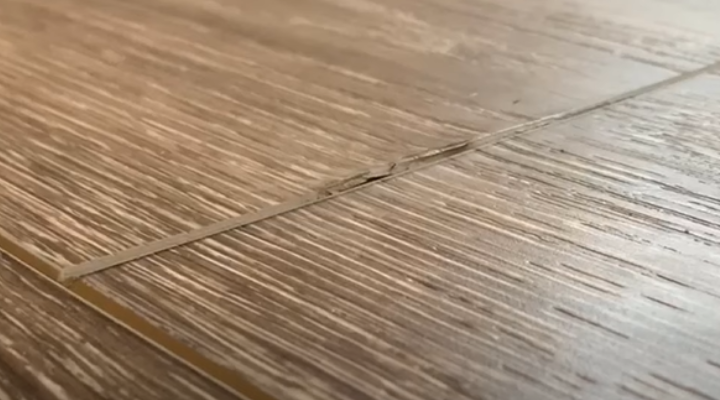Best Flooring for Stairs: Top 5 Options for Durability and Safety
Choosing the best type of flooring for your stairs is a crucial decision that affects both the aesthetics and functionality of your home. Stairs are high-traffic areas, and the right flooring can enhance their safety, durability, and overall look. If you’re wondering, “What type of flooring is best on stairs?” you’re in the right place. In this guide, we’ll delve into the different flooring options available, the factors to consider when choosing, and the pros and cons of each material.
What Type of Flooring is Best on Stairs?
When it comes to stair flooring, the material you choose should balance durability, safety, aesthetics, and maintenance. Stairs are a focal point in many homes, and selecting the right type of flooring can elevate the overall design. There are several options to choose from, each with unique features and drawbacks. Let’s explore the best flooring types for stairs in detail.
Hardwood Flooring for Stairs: Timeless Elegance
Hardwood flooring is often the first choice when considering stair flooring due to its classic and sophisticated appeal. It offers a timeless aesthetic that suits almost any style, from traditional to contemporary interiors. However, there are some factors to keep in mind before committing to hardwood for your stairs.
Pros of Hardwood Flooring for Stairs
Hardwood floors are incredibly durable and, when properly maintained, can last for many years. They also have a high resale value, which can be a plus if you plan to sell your home. Additionally, hardwood provides an elegant look that can complement any decor.
Cons of Hardwood Flooring for Stairs
While beautiful, hardwood can be slippery, making it less safe, especially for households with young children or elderly members. Moreover, it can be prone to scratches and dents from heavy foot traffic, and it requires regular maintenance to keep its shine.
Engineered Wood Flooring for Stairs: Durability and Style
Engineered wood flooring is an excellent alternative to solid hardwood. Made from a real wood veneer over plywood, engineered wood offers the same aesthetic appeal as hardwood but with enhanced durability. It’s particularly suitable for environments that may experience more moisture, like basements.
Pros of Engineered Wood Flooring for Stairs
Engineered wood is more moisture-resistant than traditional hardwood, making it a great choice for stairs in homes with varying humidity levels. It’s also more affordable than solid hardwood and can still provide a rich, elegant look. Installation is relatively easier, and engineered wood is less likely to warp over time.
Cons of Engineered Wood Flooring for Stairs
One downside is that engineered wood cannot be refinished as many times as hardwood, so its longevity might be a bit shorter. Additionally, it may not be as durable as hardwood, especially when exposed to heavy traffic or moisture.
Laminate Flooring for Stairs: Budget-Friendly and Low Maintenance
Laminate flooring has come a long way in terms of quality and aesthetics. Once viewed as a cheap alternative, modern laminate can mimic the appearance of wood or stone and is available in a wide range of colors and styles. For those on a budget, laminate is an excellent option for stairways.
Pros of Laminate Flooring for Stairs
Laminate is affordable, durable, and easy to maintain. It’s also scratch-resistant, which makes it a great choice for homes with pets or children. Furthermore, it’s available in various designs, allowing you to mimic the look of more expensive flooring materials like hardwood or tile.
Cons of Laminate Flooring for Stairs
One of the main disadvantages of laminate is that it cannot be refinished if it becomes damaged. Over time, the surface can show wear and tear, especially on high-traffic stairs. Additionally, laminate can be noisy underfoot and might not offer the same warm feel as wood.
Luxury Vinyl Tiles (LVT) for Stairs: Water-Resistant and Versatile
Luxury Vinyl Tiles (LVT) have gained popularity due to their durability, water resistance, and design versatility. These tiles are designed to look like natural materials such as wood or stone but are far more affordable and practical for high-traffic areas like stairs.
Pros of LVT Flooring for Stairs
LVT is water-resistant, making it ideal for areas that are exposed to moisture, such as stairways near entryways or kitchens. It is also very durable and resistant to scratches and dents. LVT is available in a wide range of styles, from wood looks to stone and tile designs.
Cons of LVT Flooring for Stairs
While LVT offers great practicality, it may not have the same luxurious feel as real wood. It can also be more prone to damage if heavy furniture or objects are dropped on it, and the seams between tiles can be visible over time, especially if not properly installed.
Carpet Flooring for Stairs: Comfort and Safety
Carpet on stairs provides comfort and safety, making it a popular option for homes with children or elderly family members. It offers a cushioned feel and a soft, warm appearance that adds to the overall comfort of your home.
Pros of Carpet Flooring for Stairs
The primary benefit of carpet flooring is its softness, which can prevent slips and falls, making it the safest option for stairs. Carpet is also available in many colors and textures, allowing you to match it with your home’s design. Additionally, it’s great for soundproofing, reducing the noise associated with foot traffic.
Cons of Carpet Flooring for Stairs
Carpet can be difficult to clean, especially in high-traffic areas. Stairs are notorious for accumulating dirt, dust, and debris, which can make carpeted stairs harder to maintain. Over time, carpets can wear down, losing their softness and requiring periodic deep cleaning or replacement.
Safety Considerations When Choosing Flooring for Stairs
One of the most important factors to consider when selecting flooring for stairs is safety. Since stairs can be hazardous, especially for children or elderly family members, choosing a flooring material with good traction is essential.
Slipperiness and Traction
Wood and laminate floors can become slippery, which poses a risk of falling. If you prefer these materials, you can install stair treads or rugs to increase grip. Carpet is often considered the safest option for stairs due to its natural friction and ability to prevent slips.
Visibility of Stair Edges
Choosing a flooring material with clearly visible edges can help prevent tripping. Some materials, like LVT, have a more pronounced edge, making it easier to see where the stairs begin and end. On the other hand, smooth and polished wood can sometimes blur the edges, leading to potential hazards.
Durability of Flooring on Stairs
Durability is another key consideration for stair flooring, especially since stairs experience a lot of foot traffic. High-traffic areas require a floor that can withstand constant use without showing signs of wear too quickly.
Hardwood and Engineered Wood
Both hardwood and engineered wood are durable options for stairs, but they may need more maintenance to preserve their appearance over time. While they resist scratches well, they can still be damaged by heavy impacts.
Laminate and LVT
Laminate and LVT are highly durable and scratch-resistant. However, laminate can be prone to damage from moisture, which is why LVT tends to perform better in areas with humidity or potential water exposure.
Acoustic Properties of Stair Flooring
The acoustic properties of your stair flooring can have a significant impact on the noise levels in your home. If you live in a multi-story house or apartment, the sound of footsteps can carry from one floor to the next, disrupting the peace.
Carpet
Carpet is the best option if you’re looking to reduce sound and noise. It absorbs sound well, making it ideal for preventing loud footsteps on stairs. Additionally, carpet padding can further enhance soundproofing.
Wood and Laminate
Both wood and laminate floors can be noisy underfoot. To reduce this, consider adding soundproofing underlayment to minimize the impact noise.
Cost Comparison of Flooring for Stairs
The cost of flooring for stairs varies depending on the material you choose. It’s important to consider both the upfront cost of the flooring and the long-term maintenance costs.
Hardwood
Hardwood is the most expensive option for stairs. While it offers exceptional durability and an elegant look, the high cost might not fit everyone’s budget. Installation is also typically more expensive.
Laminate and LVT
Laminate and LVT are budget-friendly options that still provide a similar aesthetic to hardwood. While the initial cost is lower, it’s important to note that LVT’s water resistance can justify its price.
Carpet
Carpet is typically the most affordable option, though it may require more maintenance and occasional replacement, which can add to the overall cost.
Conclusion
When selecting the best type of flooring for your stairs, there is no one-size-fits-all solution. Each material offers unique benefits, and the choice ultimately depends on your priorities, whether it’s safety, durability, aesthetics, or cost. Hardwood and engineered wood bring elegance and durability but may require more maintenance. Laminate and LVT are practical and affordable, while carpet offers comfort and safety. By considering the factors that matter most to you, such as family needs, maintenance, and budget, you can make an informed decision on what type of flooring is best for your stairs.




